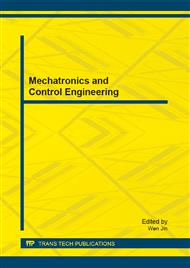p.301
p.307
p.313
p.318
p.323
p.329
p.333
p.341
p.349
A Study on the Use of Multicast Protocol Traffic Overload for Active Network
Abstract:
Multicast requires reliability in one-to-one or multi-counterpart communication services and such demand for reliability becomes more and more an important factor to manage the whole network. In addition, it requires link of broadband network, real-time transmission, and much effective multicast protocol in order to support application of multimedia that has become a dominant figure recently. Communication method for multicast is a way of communication for a transmitter that provides multicast data to every registered member in the transmitters group, and it can be classified into the traditional and the reliable communication methods in general. The traditional communication method is very fast in connection but quality of service is poor. In contrast, the reliable communication method provides good quality in service but its speed is somewhat poor. Thus to enhance such demerits, this thesis proposes communication method of multicast by using active network method. In this thesis, a fair and practical bandwidth is used for data packet transmission along with the use of active network. The bandwidth and data processing capability filters out the transmitted data from an active router through transmission packet and upgrades multimedia data packet more effectively. Therefore, recipients in various levels receive the effective data packet and based on these facts, the study actualizes and evaluates efficiency of a router, which is able to transmit the fair bandwidth from active router in a simulation.
Info:
Periodical:
Pages:
323-328
Citation:
Online since:
July 2013
Authors:
Keywords:
Price:
Сopyright:
© 2013 Trans Tech Publications Ltd. All Rights Reserved
Share:
Citation:


